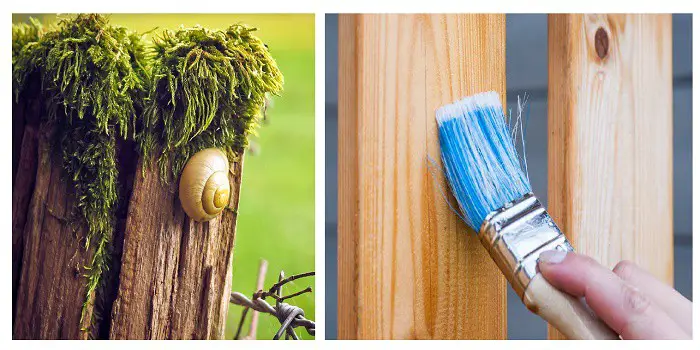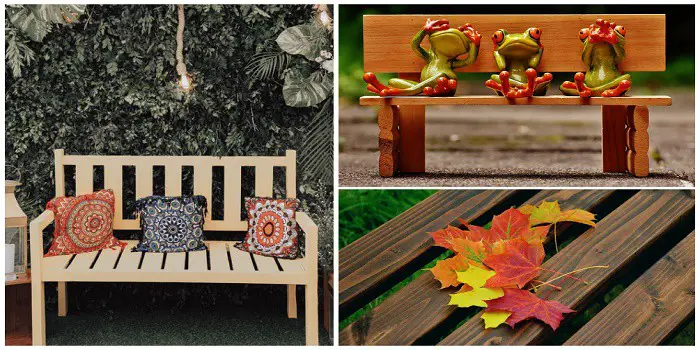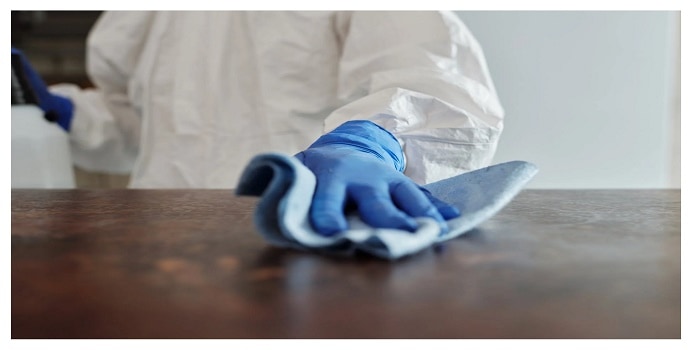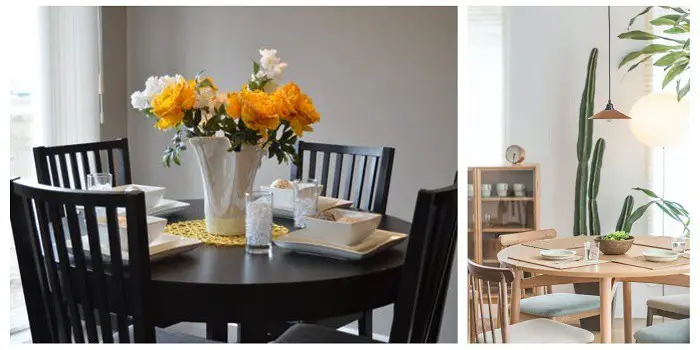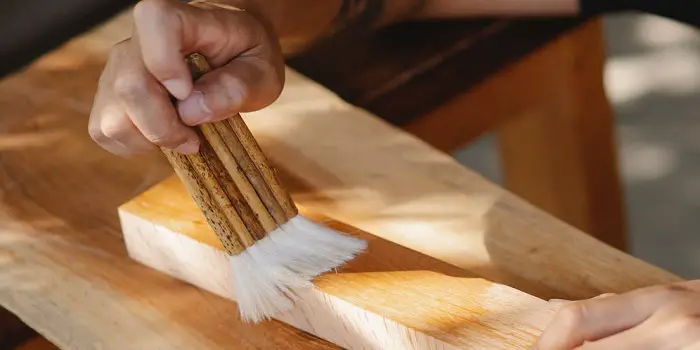
Although many people may consider all wood varnishes the same, there are substantial differences based on the material to which it will be applied.
The different applications may include whether you want to bring out the beauty of the wood or protect it from the elements.
The good thing is, like paint, you can purchase varnish that has a specific type of finish, such as matte, satin, or gloss.
Gloss is the smoothest and shiniest. Matte is the opposite, as it does not shine and looks dull.
But while paint covers the surface, the varnish will penetrate the material to help protect it against the elements. It is this protective element that also provides a film over the surface that can be glossy or matte in nature.
Types of Varnish Finishes
In general, there are eight basic types of varnishes available.
1- Acrylic
A water-based, non-toxic, and quick-drying varnish, this is an excellent product to use on outdoor furniture because it offers solid UV resistance.
You can find acrylic varnish in satin, matte, or gloss finishes. Because of its versatility, you can use different materials other than wood.
Another advantage is that acrylic varnish does not tend to get yellow with age or exposure.
But the downside is that it does not penetrate the wood very well and can be uneven in its application, so you will need to be careful.
2- Alkyd
Derived from alkyd resin, this is a clear varnish for wood.
Good for outdoor and indoor settings, alkyd works in a wide range of circumstances. Plus, it has been engineered to cure faster, often using cobalt salts.
The varnish itself brings out the beauty in the wood, especially the grain.
If you choose from some of the more expensive versions, you can find alkyd varnishes using high-performance oils along with better UV protection.
This improves the overall glossiness and extends the protection over time.
3- Exterior
As the name implies, this is a strong, durable varnish that is made for use outdoors.
If you experience rough weather conditions from time to time, then this is the varnish to use.
It also has UV protection which means that it resists aging from exposure to sunlight.
But another advantage is that the varnish also protects against water while allowing the wood to breathe. This means it can repel the rain and keep the wood looking good.
But it is not waterproof in the sense that it can be submerged and still provide protection.
You’ll often find fungicides mixed with the varnish to prevent termite colonies along with fungus from building up on the wood.
If there is a downside, it tends to take longer for exterior varnish to cure compared to some other varnishes.
4- Lacquer
This is really not a varnish, although it is often mistaken for one. The term is really in how the finish is being applied and not what it is made from.
What is true is that lacquer is a solvent-based finish that dries quickly. Acetone is the normal solvent base used for lacquer.
5- Oil
Sometimes called drying oil, this type of varnish is created by dissolving copal or amber into the oil.
It is not a true varnish. It is the only oil that lacks the other elements essential to creating a varnish.
If you use raw oil varnish, it may take weeks to fully dry and cure. This process can be speeded up using additives, polymerizing part of the oil, or boiling it.
Linseed and tung oil are the most common varieties; however, mineral oils and coconut oils can also be used depending on the project.
This type of varnish is best suited for exposed surfaces that require frequent cleaning. You can find this type of oil used on violins as an alternative to spirit varnish.
6- Polyurethane
One of the most versatile materials ever created, polyurethane varnishes are quite durable and tough.
You’ll often find this type of varnish used on floors because it is so resilient to both impacts and heat.
The clear finish is similar to what you find in exterior varnishes. Plus, it comes in satin, matte, or glossy finishes to match your needs.
As with some types of varnishes, it does not penetrate the wood, so you will need a primer such as thin shellac or oil-based varnish which will need to be applied first.
Once it hardens, the polyurethane will resist water, mild acids, and other solvents that can damage other types of varnish.
The one downside is that it does not offer much in the way of UV protection, so if you use it outdoors, you may have to apply a coating of another product.
Or, keep the items out of the sunlight as much as possible.
7- Spirit
You may hear this type of varnish called French-Polish or Shellac.
This is a type of varnish that uses shellac dissolved into spirits. It is applied in thin layers to protect the material, but it is not really a varnish at all.
Shellac is the secretion of beetles found in South East Asia and comes in flakes which are then diluted in alcohol.
You can find shellac in clear or different shades depending on what you need.
Shellac can be used as a primer for other varnishes, such as acrylic or polyurethane, if it has been de-waxed.
Removing the wax allows for the primer to penetrate the wood so the acrylic and polyurethane can be applied over the top.
Shellac provides a translucent finish and is perfect for materials such as flame maple.
However, spirit varnish is not well suited for exposure to the elements, so do not use them on outdoor furniture.
8- Yacht
Sometimes called a marine or spar varnish, yacht varnish is quite flexible and, as the name suggests, waterproof.
This makes it one of the perfect finishes for use on wooden boats, so the water does not seep inside.
Since aesthetics were not much of a priority on ships and boats, only recently has this type of varnish seen some variety.
Plus, it did not have any UV protection for a long time, but that has changed, and now you can find it in different forms.
However, it is this function that makes yacht varnish rather limited in use.
Apart from long exposure to the sea and the battering waves it brings, there are other types of varnishes that will work much better for most items.
You can find a yacht finish with some UV protection and a high-gloss finish if you really want to bring out the shine.
It has retained its flexibility and resistance even with the inclusion of phenolic resins and tung oil, so you can spruce up your yacht or whatever surface you apply the varnish.
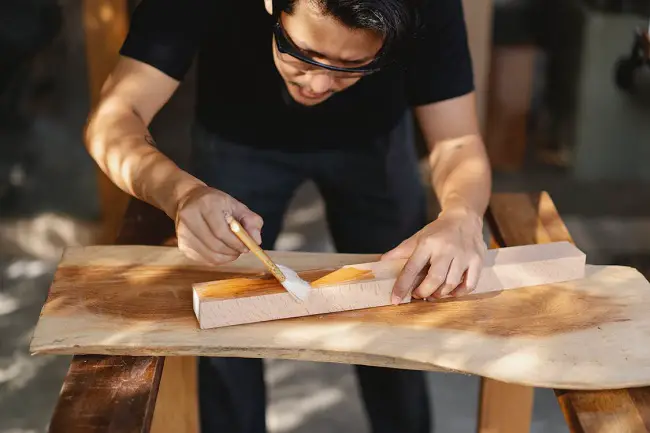
Varnish – Pros & Cons
The first and arguably most important advantage that varnish offers is that it does not cover up the grain of the wood.
Varnish soaks into the wood to enhance its natural beauty.
It also protects the wood from dust, dirt, and debris that otherwise might penetrate the surface.
The protection also extends to water and ultraviolet or UV rays of the sun.
In addition, varnish provides one of the most natural appearances for any product designed to protect wood surfaces.
It is easy to apply and does not leave behind brushstrokes as compared to shellac or paint.
This means that if you want to protect the wood and bring out its natural beauty, the varnish is the obvious choice.
However, while varnish does have several advantages, it can dull over time.
This is mostly due to the UV rays of the sun, which will penetrate the varnish and turn it yellow.
This means that for any wood you protect with varnish, keeping it out of the sunlight to avoid extended exposures is important.
Another downside is that you have to be careful when mixing varnish, as it tends to bubble if you shake it in the can.
You’ll also need some mineral spirits or lacquer thinner to clean up after using some types of varnish, although there are varnish products that clean up well with only water.
What is Wood Varnish Made of?
Put simply, varnish is a kind of paint without pigment. It has three common elements.
- Oils
- Resin
- Thinner
Its basic elements start with the varnish oils that cure and harden when exposed to the air. This provides a protective coating over the wood.
The amount and type of oils used in ratio to the resin will also affect the appearance.
From hard, brittle finishes to those that are softer and more flexible. Plus, there are varnishes that are weather-resistant as well.
The choice of oil will affect the look of the wood, especially when it contains some coloring that provides a tint.
The oil also determines the gloss factor of the oil, which may be quite shiny or matte in its appearance.
Resins are either organic properties such as insect secretions or tree resins to artificially produced products such as plastics or polymers.
The choice of resin will affect the varnish oil, which is why many choose resins that do not alter the coloring.
Finally, the thinner is what it says. It thins the oils and resins, which allow the varnish to be applied to the surface.
When the job is complete, the thinner will evaporate so the resins and oils can properly cure into the wood itself.
Thinners are often made from turpentine or white spirit and even water is sometimes used.
How to Apply Varnish Finish to Wood?
Although most people may associate varnish with wood finishing, it can be applied to a variety of materials to protect the surface and for aesthetic reasons as well.
To get the best results, you should be in a well-ventilated room that is from 70 to 75 degrees F.
This will help the varnish to cure properly. Before you apply the varnish, a sealer coat will need to be applied.
You can use thinned varnish as a sealer.
You can apply the varnish with a roller, pad, brush, or spray, although brushes are the most common method.
Apply three or four coats in the same manner you apply the sealer.
A Few Less Toxic Alternatives to Wood Varnish
Many people avoid using wood varnish and polyurethane due to their toxic nature.
Polyurethane, for example, is made from synthetic chemicals that can release volatile organic compounds (VOCs) into the air. These can be harmful to your health if inhaled or ingested.
If you’re looking for an alternative to polyurethane that is less toxic, there are a few natural oil-based substitutes available that are odorless and eco-friendly.
1- Tung Oil
Tung oil is a natural oil that comes from the seeds of the tung tree.
It’s one of the most popular substitutes for polyurethane because it’s durable and provides a nice, natural finish.
2- Linseed Oil
Linseed oil is another popular natural oil-based alternative to polyurethane.
It’s made from flax seeds and has been used for centuries as a wood finish.
3- Candelilla Wax
Candelilla wax is a plant-based wax that can be used as an alternative to polyurethane.
It’s made from the leaves of the Candelilla plant and has a similar finish to beeswax.
All these natural alternatives to varnishes are biodegradable, odorless, and made from plant oils.
These provide a protective finish without the use of synthetic chemicals that contain volatile organic compounds (VOCs), which can be harmful to your health.
They are easy to apply and can be buffed to a high gloss finish to provide good protection against scratches and dings.
The only drawback is it may take longer to dry than polyurethane and can be difficult to remove if you change your mind about the finish.
Also, it can darken some woods over time.
When choosing an alternative to polyurethane, it’s important to consider the project you’re working on, whether it is for small projects or touch-ups, or for larger projects.
Whatever type of varnish you choose, be sure to read the label carefully and follow the manufacturer’s instructions to ensure proper application and safety.
Final Thoughts
If the paint has one advantage over varnish, it is the sheer number of colors that it offers. Varnish has far fewer choices when it comes to colors, so you are limited in that area.
If you do not like the natural beauty of the wood, then you may want to use paint instead of varnish for better color choices. However, the varnish is quite good at bringing out the best qualities of the wood. And it’s available in so many different types that you can choose the one that is best suitable for your project.

Hi, I am Mark Garner a professional carpenter, woodworker, and DIY painter. I live in the small city of Peoria, Arizona as a semi-retired woodworker. I have started this blog with a simple motive to help you with my wood experience in this sector. If you like to know more about what I love doing and how it all got started, you can check more about me here.

